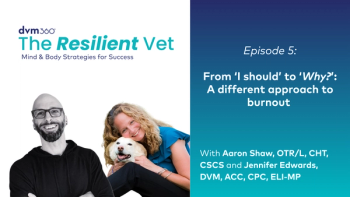
Fit to Practice: Why you should be sick of sugar
Our taste buds have been hijacked by super-sugary sweets. It's time to reclaim our palate with natural, real flavors. Before long you'll take a nibble of New York cheesecake and spit it out.
Sure, you know sugar is bad for you and your veterinary team. Eating too much of it can result in cavities and weight gain—but do you know the other dangers? It turns out our sweet tooth is killing us.
The crystallized form of sugar was first discovered around 350 A.D. in India during the Gupta dynasty. I’m not sure if CNN’s Dr. Sanjay Gupta is a distant relative or not, but perhaps his health crusade is some divine karma at work. Whatever the case, sugar has been involved in some shady historical dealings and is intimately interwoven with slavery, European power plays, and massive wealth. Perhaps that last point is why sugar has stuck around so long. We love sugar more than ever and are willing to pay for it—even if it costs us our lives.
When I heard them, the following two facts hit me like a Mike Tyson combo:
1. According to the USDA, Americans consumed almost 22.5 billion pounds of sugar in 2011.
2. Sixty-eight percent of U.S. adults are overweight or obese.
I’m certainly not the first to note this and far from the brightest. In the February 2012 edition of Nature, researchers from the University of California published an article titled, “The toxic truth about sugar.” This was in Nature, not Healthy Food. This sugar thing was getting serious. Or weird.
Lead author Robert Lustig calls sugar a poison—a toxin—and states, “Authorities consider sugar empty calories—but there’s nothing empty about these calories. A growing body of scientific evidence is showing that fructose can trigger processes that lead to liver toxicity and a host of other chronic diseases. A little isn’t a problem, but a lot kills—slowly.” Pretty heavy stuff for Nature. Of course, not everyone agrees.
Lustig’s opponents say things like, “To describe sugar as ‘toxic’ is extreme, as is its ludicrous comparison with alcohol. Such sensationalism could damage the livelihoods of thousands of people working in the sugar industry worldwide, and will be felt in countries such as Australia, the United States, Fiji, Mauritius, Indonesia, and India.” Others argue, “Overconsumption of foods that have a high glycaemic [sic] index (that trigger a rapid and sharp increase in blood glucose), such as wheat, potatoes, and certain types of rice, also contributes to obesity and diabetes. Emphasis on sugar alone is therefore too narrow a basis for devising policies to curb these problems.” They’re both right, in my opinion. But who’s “righter?” That’s the real question.
(
Back in 2009, the American Heart Association (AHA) recommended that people reduce their intake of sugar and sugary foods. Why was the AHA targeting sugar? Haven’t we been told for the past 50 years that fat and cholesterol were the causes of heart disease? In fact, this was a subtle way of the AHA telling us, “Oh yeah, we forget to mention one more thing about avoiding heart disease.”
Here’s their official statement:
“High intake of added sugars, as opposed to [the] naturally occurring sugars [in plant foods and juices], is implicated in the rise in obesity. It’s also associated with increased risks for high blood pressure, high triglyceride levels, other risk factors for heart disease, stroke, and inflammation...” —AHA, August 2009. Dammit, Jim, it’s inflammation! That’s what really causes all these health problems!
Inflammation is the reason behind many if not most of the illnesses we experience. While most people think of inflammation in terms of red, swollen tissues, we veterinarians know better. We understand that the deadliest inflammation is invisible, buried deep within the cellular machinery that fails to attract the attention of the higher brain circuits alerting us to problems. Our intellect will work overtime to inform us about a stubbed toe while ignoring the death of untold legions of cells secondary to free radicals and oxidation. And you can’t blame the mind. It’s short-term survival (I can’t escape a charging buffalo if my toe is injured so I don’t go hunting today) combined with the pressure of advancing our DNA (if I spend all my time worrying about the damage I’m doing to my body I’ll never attract that hot Paleolithic huntress). I get it and am glad my mind isn’t a morass of largely meaningless messages. Imagine living a life of a Woody Allen character eternally. I’m guessing we would’ve been bypassed by the bears and big cats a long time ago. And then we would’ve never had Woody Allen and his brilliantly neurotic films. Ain’t life sweet.
Life is sweet, especially for our nation’s youth. Recent surveys conclude that today’s teenagers consume more sugar than adults. Fructose accounts for nearly half of their total sugar load, with corn syrup now ranking as the largest source of added sugar in the U.S. 2012 study conducted at the Medical College of Georgia—home state to sweet tea, fried doughnuts, Coca-cola, and Paula Deen—found that adolescents who fill up on sweet snacks and drinks had an increase in cardiovascular disease and diabetes risk factors. You can imagine the local good old boys weren’t too happy about someone harassing Paula Deen’s cooking and soda pop.
The physicians warned that if your teens swill sugary drinks, they’ll likely begin to develop high blood pressure, elevated fasting blood glucose, and insulin resistance, as well as low levels of HDL (so-called “good cholesterol”) and reduced adiponectin, both helpful in the fight against cardiovascular disease and diabetes. Even worse, children in the study were adding bikini-busting belly fat.
Now before we get into a whole debate on body image, the fact is that teenagers are highly body conscious—regardless of how much we argue that they’re not. My fear is that teens slurping sugary sodas and gaining weight are then at greater risk for trying extreme dieting, smoking, and other dangerous weight loss methods, as well as anorexia. Instead of telling our children they’re healthy at any size, why not offer water instead of pop? And before you tell me that they should be allowed to eat and drink and be skinny or fat because they’re still beautiful, let me remind you that sugar and excess weight set them up for a lifetime of medical problems, not social ridicule.I couldn’t care less if you think I’m too skinny or too fat—what I’m most concerned about is how healthy I am. I want to know if my lifestyle is reducing my risk of developing maladies that I can prevent: arthrosclerosis, Type 2 diabetes, high blood pressure, and many forms of cancer. I then want to pass those healthy habits to my family, friends, and whomever else will listen. I’m a big fan of the “see it, do it, be it” philosophy.
(
You need to be a healthy example. You’ll be surprised who’s watching. Not long ago I was on a trip cross-country when I politely refused the in-flight garbage, er, meal. I pulled out my little lunch bag my wonderful wife had prepared for me. Inside was a sandwich of zucchini millet bread and almond butter, a handful of almonds and macadamia nuts, two Clementine oranges and three squares of 92 percent dark chocolate. My seatmate leaned over and asked me if I was diabetic. I guess he didn’t see the chocolate. I replied that I preferred this type of food, to which he snarked, “If I ate like that I’d die.” He then devoured whatever highly processed offal on his tray. I wanted to say, “We all die. The secret is who lives longer and dies better.” I didn’t because if they’ll throw Alec Baldwin off a plane for playing a video game, I’m pretty sure they’d eject me at 35,000 feet for dissing their dinner.
A woman sitting in the adjacent aisle seat also had her eye on my meal. After the tension eased a bit, she leaned over and asked me what I had eaten. Turned out her husband was overweight and recently diagnosed with high blood pressure and Type 2 diabetes. She was at her wits’ end because she couldn’t find anything she could cook that was healthy. We spent the next two hours having the conversation I’m having with you on this blog. In the end, she thanked me and promised to try some of my recipes (and read this blog). You just never know who’s listening. Your healthy life might just save another.
The next week start mentally measuring how much sugar you’re eating. Substitute that soda with water. Craving a sweet? Try a whole fruit. Experiment with tiny amounts of stevia, agave, honey, coconut, and date sugars in your cooking. It’s okay to use and enjoy sugar, just only eat it in moderation. Our taste buds have been hijacked by super-sugary sweets. It’s time to reclaim our palate with natural, real flavors. Before long you’ll take a nibble of New York cheesecake and spit it out. The sugar overload will overpower your appetite. You’ll wonder, “How did I ever eat that?” I still wonder that every day. I won’t let sweetness be the death of me.
Have a topic you’d like Dr. Ernie Ward to cover in his next blog? E-mail your ideas to
Newsletter
From exam room tips to practice management insights, get trusted veterinary news delivered straight to your inbox—subscribe to dvm360.




